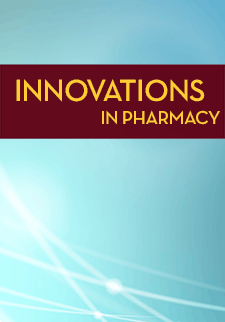High-Evidence, Actionable Phenotype Gene Distribution in a Multispecialty, Tertiary Care Clinic: Potentially Actionable Genes and a Referring Department Profile
Blake Bartlett
University of Florida
Sheena Crosby
Mayo Clinic Florida
Michael J. Schuh
Mayo School of Health Related Sciences
Monica Bennett
University of Florida
Megan Miller
University of Florida
Madison Conway
University of Florida
DOI: https://doi.org/10.24926/iip.v14i2.5476
Keywords: pharmacogenomics, PGx
Abstract
Background There has been a trend in recent years toward individualized medicine. Pharmacogenomics (PGx) is the use of patient-specific genetic variations to guide medication selection and treatment.
Objective: The primary objective was to characterize the population of referring department patients and identify the number of high-evidence, actionable phenotype (HEAP) genes in this referred population to help guide marketing efforts to the most applicable patient populations and departments.
Practice description: Located in a destination, tertiary care clinic. Providers refer patients to a Pharmacogenomics (PGx) specialist for a comprehensive medication review using their pharmacogenomic results.
Practice Innovation: The practice is innovative because it has been using PGx in the pharmacy and medical practices since 2016 and has been routinely developing and incorporating PGx best practice alerts (BPAs) into the electronic medical record (EMR) since 2020.
Evaluation Methods Genetic results were analyzed from a 27-gene PGx panel test which tests for both pharmacokinetic and pharmacodynamic genes. High-Evidence Actionable Phenotypes (HEAP) are defined as phenotypes with guideline support that may suggest an action by healthcare provider. Low-Evidence Nonactionable Phenotypes (LENP) are defined as phenotypes that do not recommend action.
Results There were 1,236 atypical phenotypes identified in the 154 patients referred. Of the atypical genes, 39.97% were HEAP and 60.03% were LENP. Of the HEAP’s identified, the majority came from CYP2D6, VKORC1, and UGT1A1. At least 1 HEAP was found in 98.7% of patients (n=152).
Conclusion There are a variety of High Evidence Actionable Phenotypes (HEAPs) with a high likelihood of at least one HEAP gene in every patient. These phenotypes can result in serious safety concerns when combined with a medication impacted by one of these HEAP genes. Thus, referral to a pharmacogenomics consultation service may lead to an overall decrease in morbidity and mortality with potential cost avoidance.



